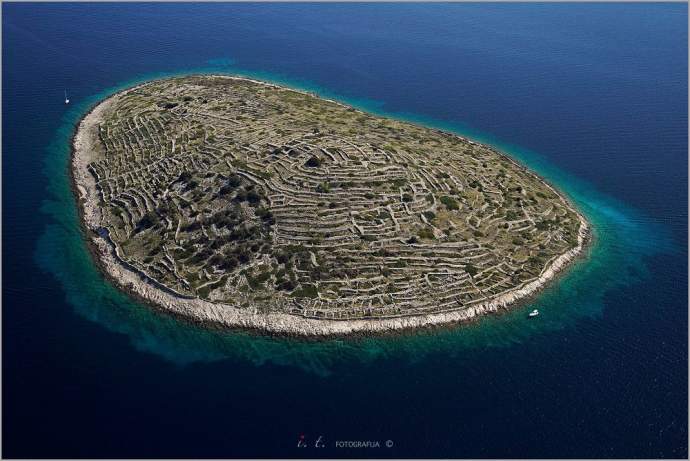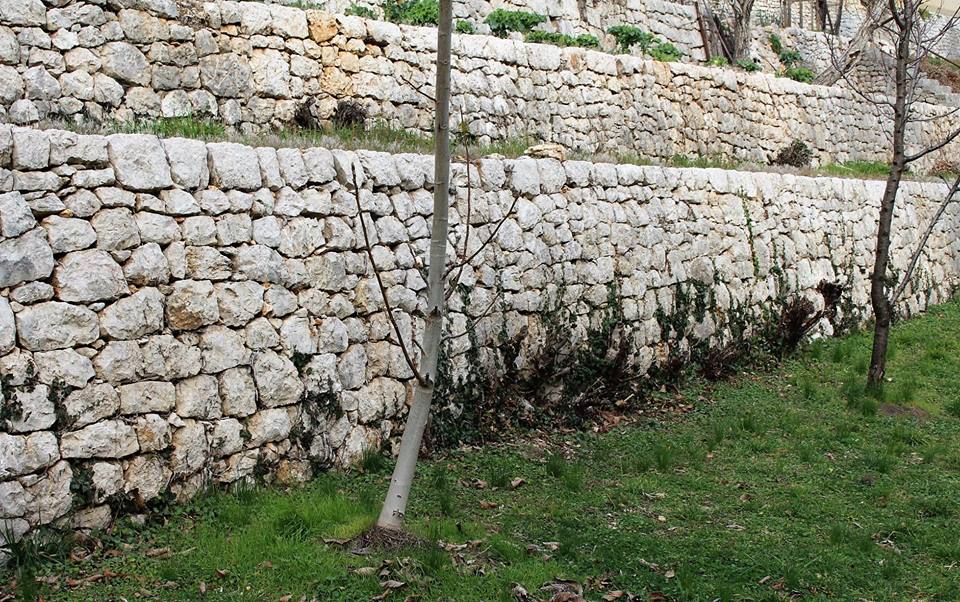Pavle Strugar, War Criminal Who Shelled Dubrovnik, Dies in Belgrade
Pavle Strugar, the war criminal who shelled Dubrovnik, causing not only wanton destruction and horrific damage to the UNESCO World Heritage Site, but also a terrible loss of life, has passed away in Serbia.
Strugar was born on the 13th of July, 1933 in Peć, in the then Kingdom of Yugoslavia, now Kosovo. The Montenegrin general served in the Yugoslav People's Army (JNA), undertaking various different roles, and eventually becoming the commander of the Second Operational Group of the JNA, which operated in southern Croatia, in 1991.
Under his command, the JNA monstrously attacked Dubrovnik in 1991, in a siege which caused tremendous damage to the city, and took the lives of both veterans and civilians. The terrible siege of Dubrovnik lasted until 1992, with Strugar retiring one year later, in 1993.
As Jutarnji reports on the 13th of December, 2018, the retired General Pavle Strugar has died in Belgrade following a short but serious illness.
Strugar was tried and sentenced for his actions, as well as for the deaths of civilians at the Hague tribunal, this was coupled with the fact that in 1991, he did nothing to prevent the horrendous war crime of the shelling of Dubrovnik. The Montenegrin initially attempted an appeal to his sentence, but that was later withdrawn.
Strugar voluntarily handed himself over to the Hague Tribunal in 2001, making a name for himself as the first Serb or Montenegrin to make such a move. Because of his part in the criminal shelling of Dubrovnik, a beloved UNESCO World Heritage Site, he was sentenced to a pitiful 7.5 years in prison, and of course, he didn't even serve that, after serving a mere two-thirds of his sentence, he was released back in 2009.
Strugar will be buried this Saturday at the Bežanijska cemetery in the Serbian capital, according to a report from Mondo.rs.
Make sure to stay up to date with our news page for much more.
UNESCO Intangible Heritage of Croatia – The Art of Dry Stone Walling
December the 1st, 2018 - Dry stone walling can be seen all along the Adriatic coast as well as in the Dalmatian hinterland and beyond. Now inscribed onto UNESCO's list, let's take a deeper look into this piece of the intangible heritage of Croatia.
On November the 28th, 2018, UNESCO inscribed two more pieces of intangible heritage from Croatia made UNESCO's prestigious list. The first one was Medjimurska popevka, a type of traditional singing, and the second was the art of dry stone walling.
This article will look into the art of dry stone walling and the traditions related to it. This piece of heritage is already on the list of the intangible heritage of Croatia, and in 2015 and 2016 an international effort to nominate this heritage for the UNESCO Representative list of the Intangible Cultural Heritage of Humanity was made. The main coordinators for the nomination from Croatia were the Ministry of Culture and the 4 Grada Dragodid association.
.jpg)
Dry walling is the construction of a stone wall by stacking stones upon each other without the use of any connection material like cement, except sometimes dry soil. The stone used is usually not processed. Its product is “suhozid” or dry wall (other names for it depending on the region are gromača, međa, mocira, mocir, masiera, redina, prizida, zid, mrtvi zid, mrtvi mir etc) which can be often found along entire Adriatic coast as well as in the Dalmatian inland area.
Another characteristic product of this way of this type of building are smaller objects made completely of dry stone, which were used for different purposes. The stability of the dry stone structures is ensured by selecting and properly placing the stones. These dry stone structures are an example of a type of construction which lives in harmony with nature and this inscription aims to preserve the know-how of building it. The practice is usually passed down with practical application adapted to the specific conditions of different areas in which it is typically made.
.jpg)
Dry stone walls are spread along the Adriatic coast, as well as inland, and the walls created via this technique resist the test of time. Their self-preservation is good example on how we can learn more and cherish such a sustainable way of building. There are different types of construction – from dry stone walls around houses, gardens, vineyards to shelter buildings or even actual houses and their elements. These buildings can act as the inspiration for a new period of dry stone construction, and the people still building in this manner could be a valuable source of information.
.jpg)
One incredible example of preserved dry stone walls is Croatia's very own ''fingerprint island'' – Baljenac, with 23,35 km of dry stone walls on the island. The organisation 4 Grada Dragodid, whose website is filled with information about this piece of heritage was founded in 2007, but its very first beginnings are from 2002. Back then, the first international dry stone workshop in the village of Dragodid, close to Komiža on Vis, was held.

The main activities of the Dragodid association include organising and managing dry stone workshops, and researching dry stone heritage with local partners and those who still use this method of construction in the modern day. Another international organisation was founded recently and its goal is to form a cultural route of European dry stone heritage as part of the wider cultural routes programme.

There is even a website, which is the open public inventory of the Croatian dry stone heritage where anyone can add a contribution in order to broaden public knowledge on dry stone wall construction and its distribution along the Adriatic coast and in the hinterland.
A contribution can be added by sending in a photo and all the available information on the dry stone building, structure or ambient, accompanied by the accurate location information. They even have a mobile app which makes the whole process even easier. With activities like this and the welcome recent UNESCO recognition, dry stone walling heritage will definitely remain an essential part of local traditions and the intangible heritage of Croatia.
SOURCE(S) (text and photos): UNESCO, Ministry of Culture, Dragodid, Suhozid.hr, Total Croatia News, Jagul Wine Cellar
Make sure to follow our dedicated lifestyle page for more information on the intangible heritage of Croatia and much more.
UNESCO Intangible Heritage of Croatia – Međimurska Popevka
December the 1st, 2018 - With two more pieces of Croatia's rich heritage having been added to the prestigious list, we take a look at one piece of UNESCO intangible heritage of Croatia, a musical tradition originating from Medjimurje - Medjimurska popevka.
On November the 28th, 2018, UNESCO inscribed two more pieces of intangible heritage from Croatia onto its list. The first one was Medjimurska popevka, which is a form of traditional singing from the continental county of Medjimurje. The second was the art of dry stone walling, the knowledge and techniques of which were inscribed together with Cyprus, France, Greece, Italy, Slovenia, Spain, and Switzerland.
This article will look into Medjimurska popevka, traditional folksong, and its heritage. This piece of heritage was arlready on the list of the intangible heritage of the Republic of Croatia, and as of now, it is also part of the UNESCO Representative List of the Intangible Cultural Heritage of Humanity.
.jpg)
The nomination process started back in 2016 and was prepared with the following experts: dr. sc. Lidija Bajuk, dr. sc. Nail Ceribašić and dr. sc. Tvrtko Zebec, along with the support of the local community and institutions from Medjimurje County.
Medjimurska popevka is an irreplaceable part of the area's local traditions and is a very popular and recognisable form of singing. This singing originates from the north-western part of Croatia and is historically a soloist vocal genre sung by women. Medjimurska popevka is used in vocal, vocal-instrumental, instrumental, monophonic and multipart renditions as a musical genre or incorporated into the dance.
Popevka has verses which are sung according to melody (viža) and in that way, they form a song (pesem). The songs are divided into the category of newer and older songs and when it comes to lyrics they are usually related to love, sad melancholy, humor and other types of emotion experienced in varying life events.
.jpg)
In general, most of the people from Medjimurje have experienced popevkas in numerous life events and were encouraged to join the making of the music in these situations. This makes popevka important an part of family and friends’ gatherings in Medjimurje. When we look into the history of this traditional singing, we can find the oldest textual evidence of popevkas dating back to the 16th century.
The songs were initially sung without any musical instruments until the 19th century, and then from then, it became common to use instruments too. Even though the songs are divided into older and newer categories, they still have the traditional way of singing and similar lyrics and themes.
.jpg)
The older songs usually involve mythological themes and are sung in a natural scale, while the newer songs are generally about real events and people, and have balanced metrical structure. The most active representatives who keep this piece of heritage alive and kicking are the cultural artistic societies and associations, as well as individual singers. At the moment, there are fifty singers regarded as masters of the art, and they are considered to be the ones able to teach these singing techniques to younger generations.
There are various cultural associations and folklore groups who use Medjimurska popevka in their performances. One of the events important for keeping this piece of heritage active is Smotra međimurske popevke, which has been happening every year since 1971 in Nedelišće.
.jpg)
Last year in June, the 38th consecutive festival of Medjimurska popevka with many participating folklore groups took place. In this way, the singing is shared among the wider public and still kept within the local community as an important part of life. Now inscribed on the list of UNESCO's intangible heritage of Croatia, this cultural gem will continue to have its significance highlighted and protected.
SOURCE(S) (text and photos): UNESCO, Ministry of Culture, Muzej Međimurja Čakovec, Culturenet, HRTurizam, Tourist Board Nedelišće
Make sure to follow our lifestyle page for more information on the UNESCO intangible heritage of Croatia and much more.
UNESCO Took Sveti Nikola Fortress Under its Wing One Year Ago, Renovation Begins
Works begin on Sveti Nikola Fortress after having been under UNESCO's wing for one year.
UNESCO Director Issues Warning to Dubrovnik Over Cruise Ship Damage
Another warning from UNESCO to the Pearl of Adriatic on the damage cruise ships are causing to the southern Adriatic gem.
White Roses of Pag, Part II: Lace, UNESCO Intangible Cultural Heritage
April 2, 2018 - Continuing our look to Pag town's famous features, a tribute to a particular item of UNESCO fame - the world-renowned Pag lace
More International Press Coverage of Problems for Plitvice
A lot has been written in the past few years about the problems several Croatian famous tourist sites are facing with the ever-increasing number of tourists that have been pouring in - and now again we seem to have come to a deadline!
Intangible Heritage of Croatia: Annual Carnival Pageant from Villages at Foot of Kamešnica Mountain
TCN's Filipa Marušić gives us a closer look at some more of Croatia's incredible intangible heritage...
Get to Know Dubrovnik's Fountains - Practical Beauty
Did you know that as European capitals like London bathed in their own filth, Dubrovnik had a fully functioning sewage system?
Stradun: How Much Do You Know About the Most Beautiful Street in Croatia?
If you've ever been to Dubrovnik, you'll have certainly walked down it, but how much do you really know about the ground you're walking on?

